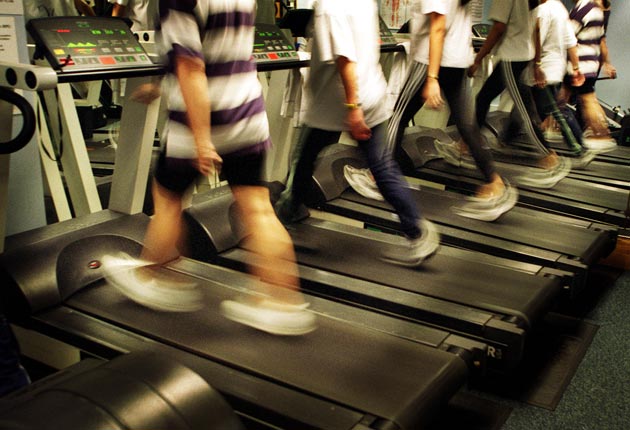Short bursts of exercise will make you fitter quicker
Interval training doesn't have to be intense to achieve results, research says

Like the diet that guarantees weight loss, the fitness regime which delivers maximum benefit for minimum effort is the Holy Grail of exercise coaches. Now they believe they have found it.
Alternating short bursts of intense activity with brief rest periods delivers more benefit for less exercise, research shows. As a way of building fitness and muscle power it beats traditional types of long-term exercise such as cycling or walking, scientists say.
"Doing 10 one-minute bursts of activity on an exercise bike, interspersed by one-minute rests, three times a week, works as well in improving muscle as many hours of conventional long-term biking less strenuously," said Professor Martin Gibala of McMaster University, Canada, who led the study.
To achieve equivalent results by traditional endurance training would require over 10 hours of moderate-intensity cycling in a period of two weeks.
It had been thought that interval training had to involve "all-out" effort at the maximum of which the individual was capable to be effective. This was fine for athletes, but not as good for ordinary people extracting themselves from their natural habitat on the sofa.
Previous studies have shown that a quick HIT (high-intensity interval training) involving all-out effort was as good as a long cycle ride (or stroll), despite taking less time and, remarkably, involving less exercise.
The new study, published in the Journal of Physiology, showed that a less extreme form of HIT also works. The subjects used an ordinary exercise bike and pedalled at about half the speed involved in an all-out sprint. The results were as good. "We have shown that interval training does not have to be 'all-out' to be effective," Professor Gibala said.
It is simple to adapt an exercise regime to resemble interval training. When out jogging or cycling, individuals can alternate one-minute sprints with one minute of coasting. The length of the sprints, and the intervals between them, can be varied as fitness improves.
Why HIT should be so effective remains unclear. But the excuse of having "too little time to exercise" is no longer tenable, Professor Gibala says. "It should be possible for the general public," he said.
Subscribe to Independent Premium to bookmark this article
Want to bookmark your favourite articles and stories to read or reference later? Start your Independent Premium subscription today.

Join our commenting forum
Join thought-provoking conversations, follow other Independent readers and see their replies